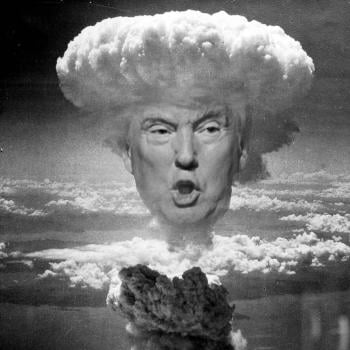Eighteen people are dead in Lewiston, Maine—victims of yet another shooting rampage. People are still asking, “Is it mental health, or guns?”

I’m a Behavioral Health Specialist. I also enjoy guns. Trust me, I know both subjects well. I keep hearing people say, “It’s a mental health crisis—it’s not about guns.” Here’s my hot take on the subject.
It’s a Mental Health Issue
Every day, I work with a volatile population who may become dangerous at any moment. I am trained to spot the difference between someone who merely uses violent language and someone who could potentially be a danger to themselves or others. Some days, it’s easy to tell.
Like the client with delusions who keeps bladed weapons all around his apartment. One day I knocked on a client’s door and he said, “Oh, it’s you! If it had been anybody else, I’d have stabbed them. Especially if it was a cop.” On this same day, the client said, “This is my cry for help. It’s not a question of if, it’s a question of when. One of these days, I’m going to go Anakin Skywalker (notorious for his mass murder of children).”
When there are enough signs that someone is a danger, I have a duty to report. So, I called a Designated Crisis Responder, whose responsibility it is to contact the client and determine if he needs to be involuntarily detained for mental health examination and treatment. Where I live, a DCR can detain someone deemed a potential threat for seventy-two hours. A court must decide if the person meets the criteria to be detained for treatment for up to fourteen days. The court also has the right to take a person’s weapons from them if they are deemed an imminent threat. At the time of discharge, a person is then referred to ongoing treatment. Sometimes, that’s enough. Sometimes, it isn’t.
Spotting the Warning Signs
If mass shootings could be chalked up entirely to mental health issues, we might be able to solve the problem through the work of behavioral health professionals. We could disarm people before they became a threat. But the more training I have, the more I’ve come to believe that you can’t always spot the warning signs. Sure, some people are obviously dangerous. But others give no warning at all. Not everybody advertises their intentions.
And, even if you could always catch the warning signs, you can’t just hospitalize someone for violent language. A DCR can only hospitalize someone if they are an “imminent threat to self or others.” This means the person must have the motivation, the means, and the plan to carry it out soon. Many DCRs express the frustration that they know someone to be a danger, but they’re not “imminently dangerous.” For this reason, a DCR’s hands are tied, and they cannot detain. Too often, we don’t know that someone is “imminently dangerous” until they’ve perpetrated violence. By then, it’s too late.
If It Were Just About Mental Health
Let’s suppose for a minute that America’s problem with gun violence was 100% a mental health issue, and not a gun problem at all. The solution would be to make mental healthcare free and available to all people. Yet, with the US healthcare system as it is, many find mental health therapy beyond their reach.
I have another client who lives with Schizophrenia and Bipolar Disorder. With the violence he talks about, I find him a bit disturbing. The court has mandated that he connect with mental health resources. Yet, he has not done so on his own because his condition has prevented him from taking action himself. Now that he is in my program, I have made the connection for him. We were told he can’t even get a mental health referral until he has seen his primary care physician. We tried to schedule with his doctor and couldn’t get an appointment for two months. So, in two months we’ll get a referral, and we’ll make a behavioral health appointment two or three months down the road from that. It will likely be five months before he can even get an evaluation, much less proper care.
The US has a privatized healthcare system, where access to mental health services can be difficult and expensive. Thank goodness, my client is on Medicaid (socialized healthcare), and doesn’t have to worry about paying for therapy. For many people, the ability to pay for therapy and psychiatric medication is an unattainable dream. If we made mental health services freely available to all on an unlimited basis, this would go a long way to solving the problem. But for now, mental healthcare is unavailable to many. This is why we’ve got to understand that yes—it’s mental health. But it’s also guns. They’re just too damn accessible.
Is It Mental Health, or Guns?
Is it mental health or is it guns? It’s both. If we ban high-capacity magazines, limit ammunition purchase and possession, institute wait periods, and red flag people with certain mental health diagnoses, this is a good start. I invite you to check out my article, “America Is Shooting Herself.” In that article, I make some more suggestions and talk about the problem with the Second Amendment. As I said earlier, I enjoy guns. I grew up sorting, and have passed many hours hunting with friends. So, trust me—you don’t need an assault rifle with a high-capacity magazine to take out a deer. I’m all for the sporting tradition, but let’s use a little sense.
When I hear people ask the question, “Is it mental health or guns?” I must admit that it’s both. But strangely, the very people who are so pro-gun are also opposed to universalized healthcare that would make mental health more accessible to everyone. You can’t say, “It’s just about mental health” without providing a solution to that problem.
A Two-Pronged Approach
So, I suggest a two-pronged approach. Stricter gun laws, plus socialized healthcare. This is why Canada doesn’t have the gun violence problem that America has. I live in Canada, and I work in the United States. Believe me—you can feel the difference when you cross the border. Because Canada has figured out that it’s a two-pronged solution. If America could learn from the lessons of its northern neighbor, we could save lives. We could realize that the victims aren’t just the ones who are shot. The shooters are often victims of a system that failed them as well.














